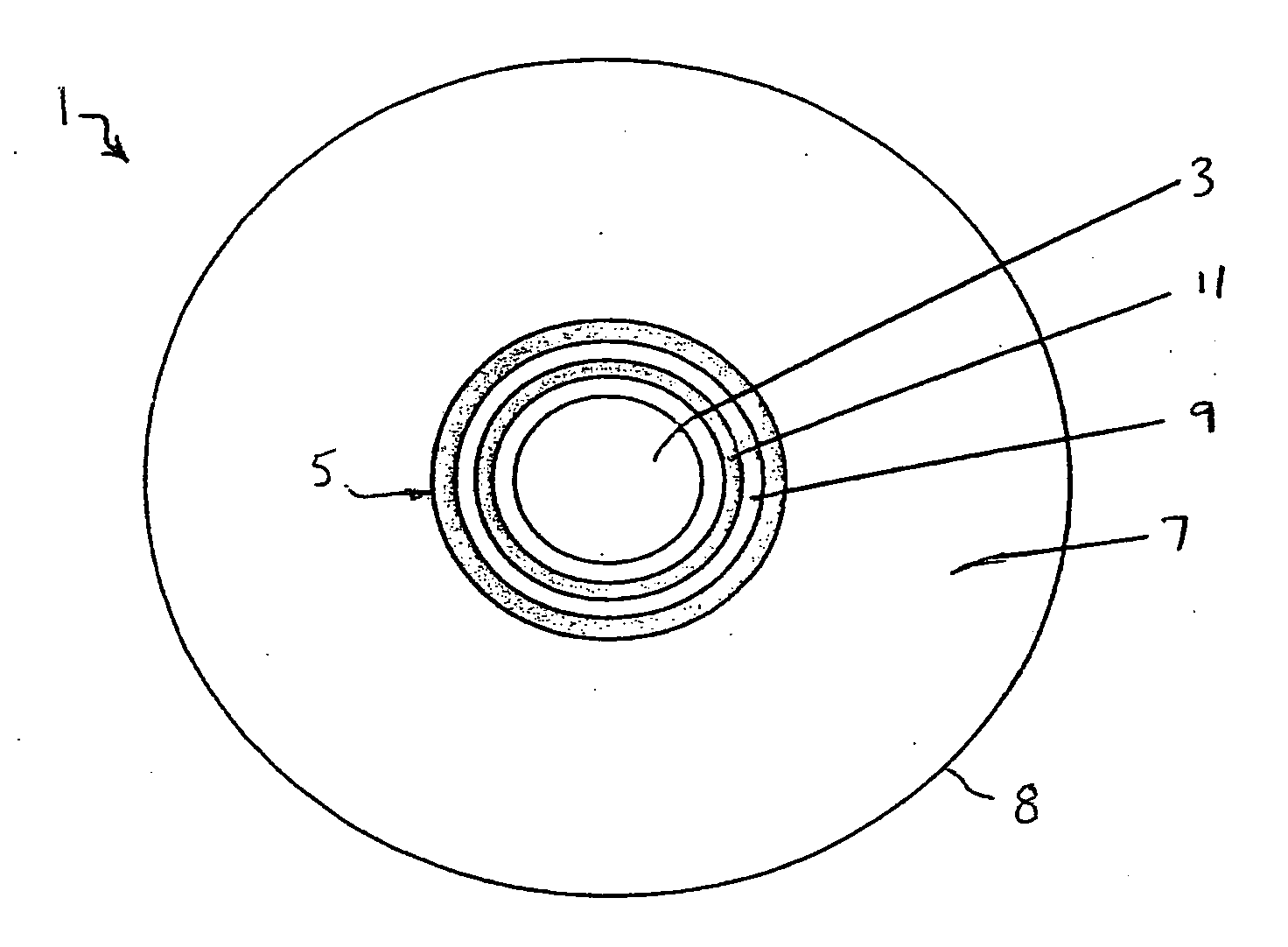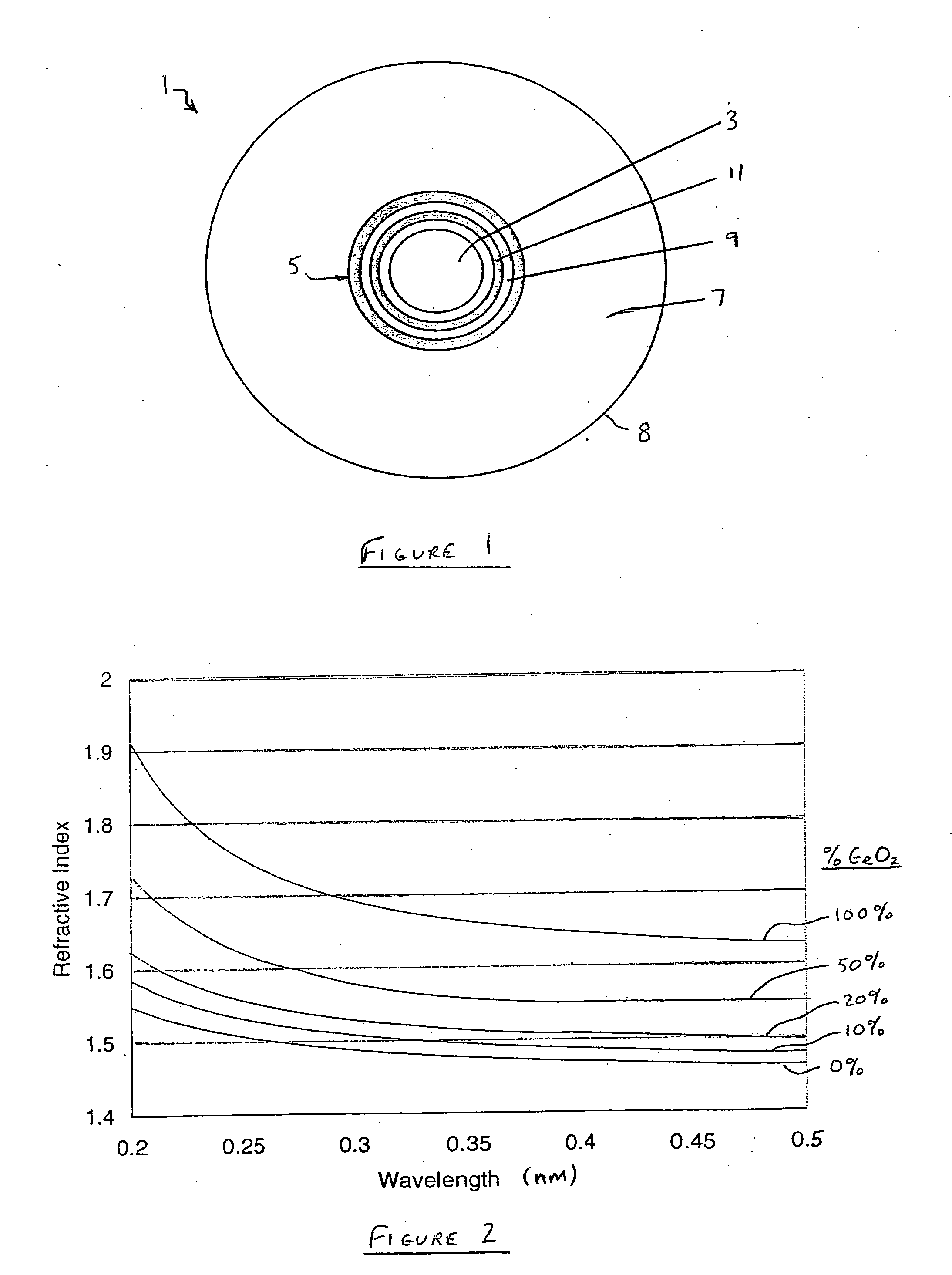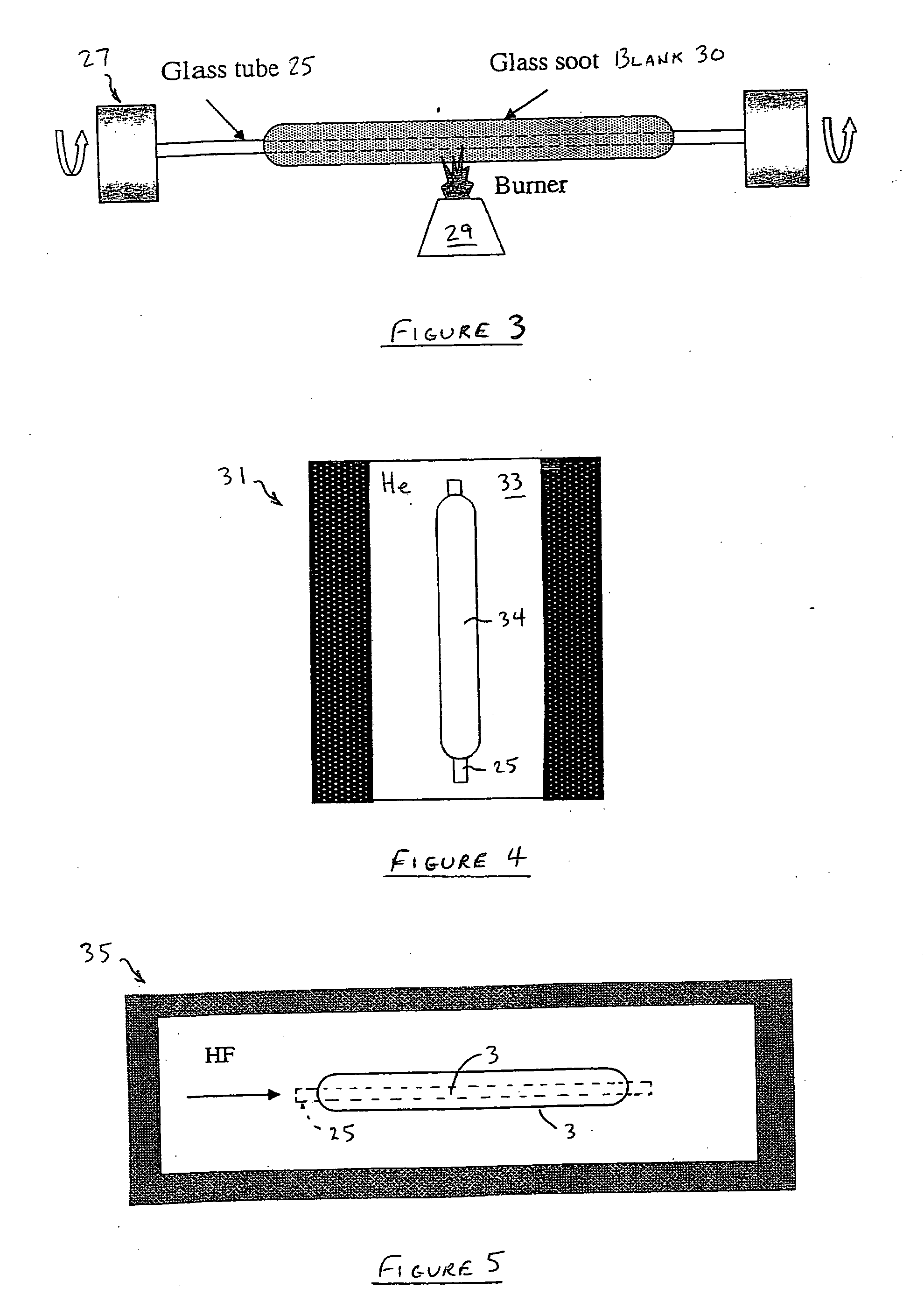Low loss photonic waveguide having high index contrast glass layers
a high-index contrast, glass layer technology, applied in the direction of optical waveguide light guide, instruments, etc., can solve the problems of limiting the amount of optical power that can be transmitted through the fiber, preventing them from realizing their full theoretical potential, and causing distortion of the shape of the optical signal, etc., to achieve the effect of increasing the bandwidth capacity of the resulting fiber, and reducing the cost of production
- Summary
- Abstract
- Description
- Claims
- Application Information
AI Technical Summary
Benefits of technology
Problems solved by technology
Method used
Image
Examples
Embodiment Construction
[0021]With reference now to FIG. 1, the photonic Bragg optical fiber waveguide 1 that forms the photonic crystal waveguide of the invention generally comprises a dielectric core region 3 that extends along the central access of the fiber 1, and a dielectric confinement region 5 that surrounds the core region 3. The dielectric core region may be between about 100 nm and 500 microns (for example, 250 nm, 500 nm, or 100 μm) in diameter, while the dielectric confinement region may be between about 500 nm and 100 microns in thickness (for example, 250 nm, 500 nm, 10 μm, or 50 μm). An outer silica cladding 7 in turn surrounds the dielectric confinement region 5 and defines the outer surface 8 of the fiber 1 as shown. The cladding may be between 10 microns to 1000 microns in thickness, and more preferably 50 to 200 microns thick.
[0022]The dielectric core region 3 is preferably air for its very low optical attenuation properties, and for its relative ease of manufacture. However, the dielec...
PUM
 Login to View More
Login to View More Abstract
Description
Claims
Application Information
 Login to View More
Login to View More - R&D
- Intellectual Property
- Life Sciences
- Materials
- Tech Scout
- Unparalleled Data Quality
- Higher Quality Content
- 60% Fewer Hallucinations
Browse by: Latest US Patents, China's latest patents, Technical Efficacy Thesaurus, Application Domain, Technology Topic, Popular Technical Reports.
© 2025 PatSnap. All rights reserved.Legal|Privacy policy|Modern Slavery Act Transparency Statement|Sitemap|About US| Contact US: help@patsnap.com



